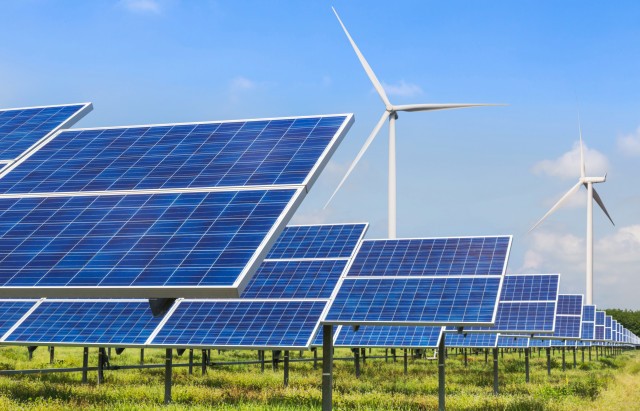The amount of renewable electricity capacity added in 2020 rose by 45 percent in 2020 to 280 gigawatts (GW), according to the IEA’s latest market update.
About 270 GW of renewable energy capacity will be added in 2021 and almost 280 GW in 2022, despite a slowdown in China after an exceptional level of additions in 2020.
“Wind and solar power are giving us more reasons to be optimistic about our climate goals as they break record after record. Last year, the increase in renewable capacity accounted for 90 percent of the entire global power sector’s expansion,” said Fatih Birol, the Executive Director of the IEA.
Global wind capacity additions almost doubled last year to 114 GW. That growth will slow down a bit in 2021 and 2022, but the increases will still be 50 percent larger than the average expansion during the 2017-19 period.
Solar PV installations will continue to break new records, with annual additions forecast to reach over 160 GW by 2022. That would be almost 50 percent higher than the level achieved in 2019 prior to the pandemic, affirming solar’s position as the “new king” of global electricity markets.
China is accounting for around 40 percent of global renewable capacity growth for several years. In 2020, China’s share rose to 50 percent for the first time due to a rush to complete projects before government subsidies were phased out.
In 2021-22 renewables growth in China is set to stabilise at levels that are below the 2020 record but still over 50 percent above where it was during the 2017-19 period. Slowdown in China in the coming years will be compensated for by strong growth in Europe, the United States, India and Latin America where government support and falling prices for solar PV and wind continue to drive installations.
China is the largest manufacturer of solar panels and wind turbines, as well as the biggest supplier of raw materials such as silicon, glass, steel, copper and rare earth materials needed to build them. Supply chain constraints, including due to a fire in a Chinese silicon factory last year, have recently pushed up prices of PV modules, highlighting the sector’s potential vulnerabilities in the longer term.
In the United States, renewable capacity growth this year and next is mainly spurred by the extension of federal tax credits. The forecast does not take into account the US administration’s new emissions reduction targets or its infrastructure bill. If enacted, the bill would drive a much stronger acceleration in the deployment of renewables after 2022.
India’s capacity additions declined by almost 50 percent last year compared with 2019. However, growth is set to rebound and renewable expansion is expected to set a new records by 2022, driven by the commissioning of delayed projects. However, the current surge in Covid‑19 cases in India has created short-term uncertainty for this year.
Transport biofuel production declined 8 percent globally in 2020 as the pandemic limited travel. Production is expected to recover this year to 2019 volumes, and expand another 7 percent in 2022 as biodiesel and hydrotreated vegetable oil (HVO) production increases globally and ethanol expands in India.

